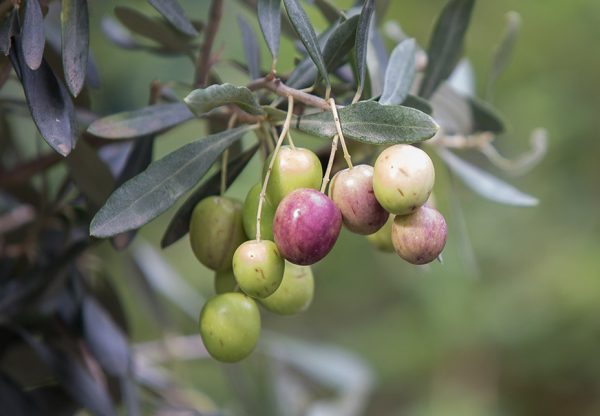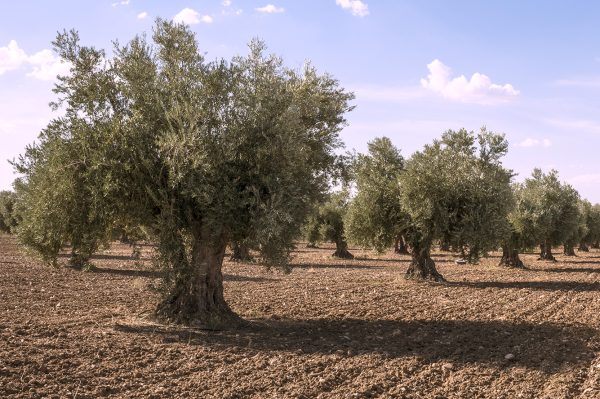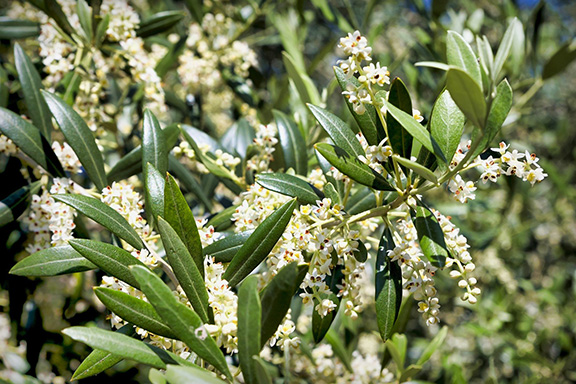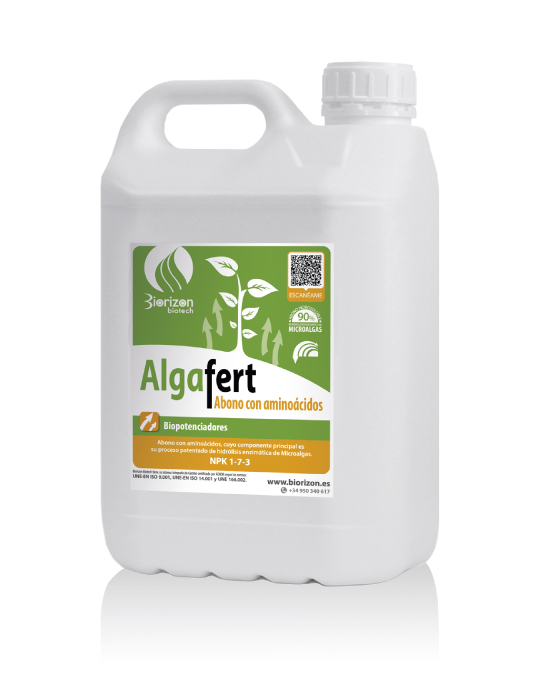

Olivar
Tests and results
OLIVAR

Olive cultivation and Representative Varieties
The olive grove, the cradle of the prized olive oil, is an age-old crop that has shaped landscapes and traditions. Among the most representative varieties are the 'Picual', known for its high yield and robustness; the 'Arbequina', appreciated for its fruity oil; and the 'Hojiblanca', known for its balanced flavour. Each variety brings unique nuances to the olive oil, making the olive grove an agricultural treasure.
Climate and Soil Requirements in Changing Times
Olive groves thrive in Mediterranean climates, with warm summers and mild winters. However, climate change presents challenges, with extreme temperatures that can affect flowering and fruit set. Episodes of drought have a direct impact on olive production, compromising the quantity and quality of the oil. In addition, blocked soils with nutrient absorption difficulties can affect the vigour of olive trees. Adaptive strategies, such as efficient irrigation systems and soil amendments, are essential to meet these challenges.
Climate change presents a challenging scenario for olive groves, with extreme temperatures and unpredictable rainfall patterns. High temperatures affect the phenology of olive trees, causing imbalances in flowering and fruit set, which has a direct impact on olive production and, therefore, on the quantity and quality of the oil. In addition, climatic variations can favour the proliferation of diseases and pests.
Drought, a consequence of climate change, is one of the biggest challenges. Irregular water availability compromises root development and the uptake of essential nutrients. Water management becomes critical, and many growers need to adopt more efficient irrigation systems and technologies that minimise water stress in olive trees.
Soil is the basis of the olive grove, but its quality is threatened by climate change. Blocked soils with low permeability hinder the absorption of essential nutrients. This leads to nutritional imbalances that affect the health of the olive trees and the quality of the oil. Management strategies, such as the application of organic and mineral amendments to improve soil structure, are essential to overcome these challenges.

Physiopathologies and Nutritional Disorders in Olive Growing Olive tree physiopathologies can have significant consequences on olive oil production. Repilo, caused by the fungus Spilocaea oleagina, affects the leaves and can reduce photosynthesis, weakening the plant. Verticillium verticillium, a soil disease caused by the fungus Verticillium, can cause wilting and death in severe cases. Black leaf spot is another common problem that affects the appearance of the fruit and reduces the quality of the oil. Olive trees can suffer from nutritional disorders that affect their development. Iron deficiency, known as iron chlorosis, causes discolouration of the leaves. Boron deficiency can result in deformed fruit and reduced yields. Olive orchard nutrition management is critical to prevent these problems, and growers should conduct regular soil and leaf analyses to adjust fertiliser applications accurately. Physiopathologies and Nutritional Disorders in Olive Growing Olive groves face challenges in pest and disease management, compounded by restrictive legislation and consumer demand for products with less pesticide residues. Olive fruit flies and reptiles are common threats. Restrictions on the use of plant protection products and the need to adopt more sustainable practices, such as biological control and integrated pest management, are imperative. Consumer awareness of responsible practices in olive oil production also influences the adoption of these strategies.

Olive groves face constant threats from pests and diseases, most notably the olive fruit fly (Bactrocera oleae). This pest can cause significant damage by attacking the fruit, affecting the quality of the oil. Other threats include olive mealybug and olive bark beetle. Integrated pest management is becoming essential, but restrictions on the use of pesticides make it difficult to control them.
Increasingly strict regulations on the use of phytosanitary products pose a challenge for olive oil producers. Adaptation to sustainable agricultural practices and implementation of biological control systems are key strategies. In addition, growing consumer demand for chemical-free products and organic certification represent a shift in market preferences, requiring producers to adjust their production methods and effectively communicate their responsible practices to consumers.
Olive oil producers face commercial and logistical challenges. Variability in oil prices, global competition and the need to maintain high quality standards are constant challenges. In addition, the adoption of sustainable practices and certification of organic products are crucial to meet market and legislative expectations.
Post-harvest Challenges and Changes in the Olive Oil Market
In post-harvest, the preservation of olive oil is crucial to maintain its quality. The requirement to reduce the use of preservatives and ensure product freshness adds complexity to storage and packaging processes. In the market, increasing competition and consumer expectations regarding traceability and sustainability of olive oil pose additional challenges. Producers must adapt to these changes in order to maintain the long-term viability of the olive oil sector and meet the demands of end consumers.
Olive grove

Olive cultivation, although rooted in agricultural history, is facing crucial challenges due to climate change. Extreme temperature variations, drought episodes and blocked soils pose substantial threats to olive oil production. This technical context prompts us to look closely at varieties, climatic and soil requirements, as well as plant pathological and nutritional problems. We will explore how to meet these challenges under the pressure of restrictive regulations and evolving consumer preferences, highlighting the essential role of fertiliser and biostimulant products in modern olive orchard management.
Olive cultivation and Representative Varieties
The olive grove, the cradle of the prized olive oil, is an age-old crop that has shaped landscapes and traditions. Among the most representative varieties are the 'Picual', known for its high yield and robustness; the 'Arbequina', appreciated for its fruity oil; and the 'Hojiblanca', known for its balanced flavour. Each variety brings unique nuances to the olive oil, making the olive grove an agricultural treasure.
Climate and Soil Requirements in Changing Times
Olive groves thrive in Mediterranean climates, with warm summers and mild winters. However, climate change presents challenges, with extreme temperatures that can affect flowering and fruit set. Episodes of drought have a direct impact on olive production, compromising the quantity and quality of the oil. In addition, blocked soils with nutrient absorption difficulties can affect the vigour of olive trees. Adaptive strategies, such as efficient irrigation systems and soil amendments, are essential to meet these challenges.
Climate change presents a challenging scenario for olive groves, with extreme temperatures and unpredictable rainfall patterns. High temperatures affect the phenology of olive trees, causing imbalances in flowering and fruit set, which has a direct impact on olive production and, therefore, on the quantity and quality of the oil. In addition, climatic variations can favour the proliferation of diseases and pests.
Drought, a consequence of climate change, is one of the biggest challenges. Irregular water availability compromises root development and the uptake of essential nutrients. Water management becomes critical, and many growers need to adopt more efficient irrigation systems and technologies that minimise water stress in olive trees.
Soil is the basis of the olive grove, but its quality is threatened by climate change. Blocked soils with low permeability hinder the absorption of essential nutrients. This leads to nutritional imbalances that affect the health of the olive trees and the quality of the oil. Management strategies, such as the application of organic and mineral amendments to improve soil structure, are essential to overcome these challenges.

Physiopathologies and Nutritional Disorders in Olive Growing
Olive tree physiopathologies can have significant consequences on olive oil production. Repilo, caused by the fungus Spilocaea oleagina, affects the leaves and can reduce photosynthesis, weakening the plant. Verticillium verticillium, a soil disease caused by the fungus Verticillium, can cause wilting and death in severe cases. Black leaf spot is another common problem that affects the appearance of the fruit and reduces the quality of the oil.
Olive trees can suffer from nutritional disorders that affect their development. Iron deficiency, known as iron chlorosis, causes discolouration of the leaves. Boron deficiency can result in deformed fruit and reduced yields. Olive orchard nutrition management is critical to prevent these problems, and growers should conduct regular soil and leaf analyses to adjust fertiliser applications accurately.
Physiopathologies and Nutritional Disorders in Olive Growing
Olive groves face challenges in pest and disease management, compounded by restrictive legislation and consumer demand for products with less pesticide residues. Olive fruit flies and reptiles are common threats. Restrictions on the use of plant protection products and the need to adopt more sustainable practices, such as biological control and integrated pest management, are imperative. Consumer awareness of responsible practices in olive oil production also influences the adoption of these strategies.

Olive groves face constant threats from pests and diseases, most notably the olive fruit fly (Bactrocera oleae). This pest can cause significant damage by attacking the fruit, affecting the quality of the oil. Other threats include olive mealybug and olive bark beetle. Integrated pest management is becoming essential, but restrictions on the use of pesticides make it difficult to control them.
Increasingly strict regulations on the use of phytosanitary products pose a challenge for olive oil producers. Adaptation to sustainable agricultural practices and implementation of biological control systems are key strategies. In addition, growing consumer demand for chemical-free products and organic certification represent a shift in market preferences, requiring producers to adjust their production methods and effectively communicate their responsible practices to consumers.
Producer Needs and Commercial Challenges in Olive Oil Production
Olive oil producers face commercial and logistical challenges. Variability in oil prices, global competition and the need to maintain high quality standards are constant challenges. In addition, the adoption of sustainable practices and certification of organic products are crucial to meet market and legislative expectations.
Post-harvest Challenges and Changes in the Olive Oil Market
In post-harvest, the preservation of olive oil is crucial to maintain its quality. The requirement to reduce the use of preservatives and ensure product freshness adds complexity to storage and packaging processes. In the market, increasing competition and consumer expectations regarding traceability and sustainability of olive oil pose additional challenges. Producers must adapt to these changes in order to maintain the long-term viability of the olive oil sector and meet the demands of end consumers.














